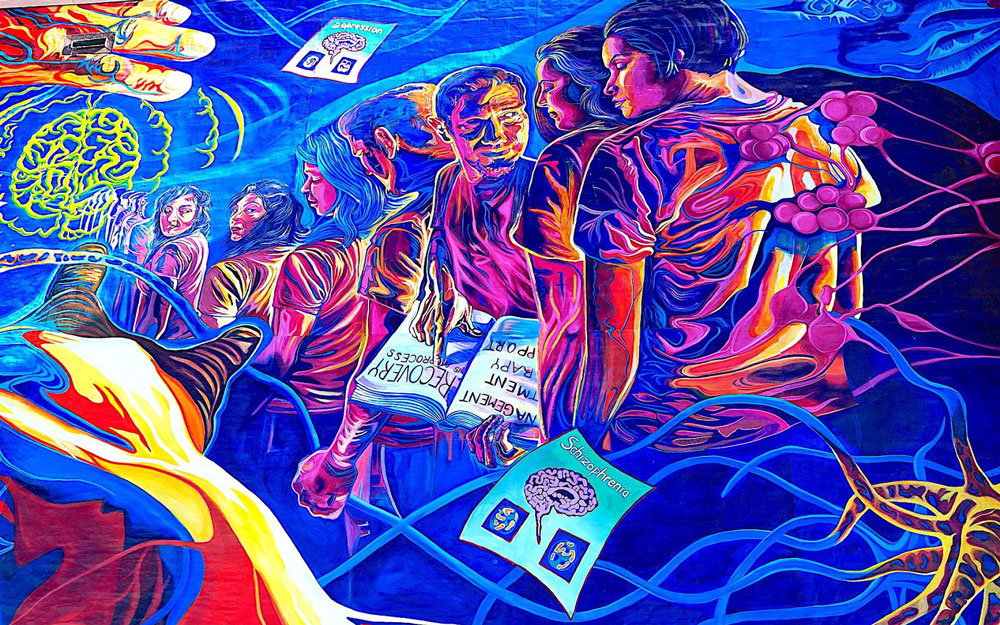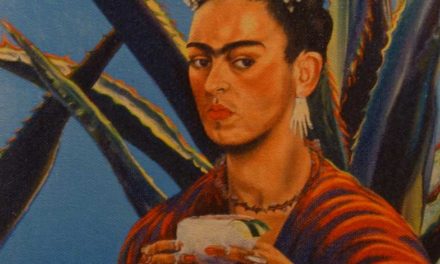In the late 1970s Chicano artists began to fill a void of public art that had long existed in the barrios of San Antonio. One of the inspirations for public art came from Mexican muralism created both in Mexico and the United States. As early as 1930, Mexican muralist maestros, Diego Rivera, Jose Clemente Orozco, and David Siquerios had all painted murals in the United States.
While the Mexican masters’ most famous murals were painted in San Francisco, Los Angeles, Detroit, New York and Dartmouth, their public art contribution was known to the young Chicano artists throughout the United States who began the mural tradition in the United States four decades later.
For aspiring San Antonio muralists, a second artistic impetus came from early 1970s Chicano murals paintings in Southern California. With the acquisition of Chicano Park in Logan Heights, part of a large barrio in San Diego, Chicano artists began their public art experiment. The artists painted murals on the tall concrete columns of the Coronado Bridge overpass. In Los Angeles, artist Judy Baca and other social activists initiated public art as a means to beautify park space as well as to find creative projects for unemployed youths in East Los Angeles barrios. At the Tujunga Wash, Baca and her team painted hundreds of murals along a half mile of concrete wall which they titled “The Great Wall of Los Angeles.”
The San Antonio mural movement began when two Westside artists, Anastacio Torres and Juan Hernandez, approached owners of a retail food store near 24th street and Castroville Road about the possibility of painting the back wall of the store. The property owners agreed on the assumption that the painted depiction of a Mexican American family would beautify the outdoor space.
With a public mural under their belt, Torres and Hernandez applied for city arts funding and received a small grant which enabled them to form the Community Arts Organization at the Cassiano Homes. Before painting any murals, they canvassed the neighborhood asking residents about preferences of artistic subjects, themes, and concepts.
By 1980, the public arts project at Cassiano Homes was well underway. City arts funding allowed Torres and Hernandez to hire young artists, many of whom had little experience in public art, to work on their mural crews. One of the motivations for creating public art concerned the prevalence of graffiti which bothered many Cassiano Homes residents. Alex Rubio, a resident of the nearby San Juan Housing complex, was one of the most active graffiti artists of the Westside. Torres and Hernandez were able to locate Rubio and redirected his artistic talents into creating images for the mural project.
In the 1980s, nearly all the Chicano murals of the city were located at the Cassiano Homes. With funding from the City of San Antonio, the Community Arts Program completed more than 50 murals. The murals included religious themes, historical events, and notable figures of the Mexican Revolution including Francisco Villa and Emiliano Zapata.
Manny Castillo, Cruz Ortiz, and Juan Miguel Ramos emerged in the early 1990s as the second generation of Chicano muralists. They founded the San Anto Cultural Arts group as a means for artists “to realize their creative abilities, interpret their culture and heritage,” and showcase their talents. A member of the San Anto group was Adriana Garcia.
Adriana M. Garcia grew up in San Antonio’s Westside and earned a Bachelor of Fine Arts degree from Carnegie Mellon University in Pittsburgh, Pennsylvania. She also studied fine arts in Valencia, Spain. Garcia’s artist statement reveals much about her approach to art and explains her passion. She writes about the social importance of art as the “most accessible way to protest, love, heal, and learn.” Garcia strongly believes that art is how we “share our stories, the voices we choose to manifest our passion, hurt, anger, sadness, love, hope, and heritage.” Her art portraying Indigneous people in Spanish colonial San Antonio demonstrates how Spaniards and Indians came to terms with their social and cultural differences.
In 2007 the Center for Health Care Services on Zarzamora Street contracted the San Anto Cultural Arts Center to design a mural for the building’s entrance. Garcia designed and completed the “Brighter days are ahead!” mural that year and ten years later it was restored by Rhys Munro.
In preparation for the Zarzamora Street mural Garcia visited the clinic and met with the professional staff. She is a firm believer that through her artwork and paintings she can “provide the viewer a visual articulation of emotions.” Her images portray individuals struggling with health issues, lack of family support, and crisis management.
Garcia received permission to engage the patients at the health care center with a survey questionnaire about their mental health needs. A response by a young man proclaimed: “Brighter days are ahead!” This response provided Garcia with the ideal title for her mural. Garcia commented that she sought to “depict the struggle of the individual striving for mental health through his/her feelings, actions and thoughts.”
Garcia’s debut picture book, All Around Us, with writer Xelena Gonzalez, was recognized with the prestigious 2018 Pura Belpre Honor for illustration. In addition, she received the 2018 Tomas Rivera Book award in the book category for outstanding children’s illustrated literature.
In explaining her art work, Garcia writes: “I create as a way to document the lives I’ve shared, (which) provides a way to honor a person’s existence and make visible the marks they have imprinted upon me and the environment– a legacy left as well as those still to come.”
(Cover Art Image Courtesy of https://adrianamjgarcia.com/)
Adriana M. Garcia: A Muralist With A Cause










